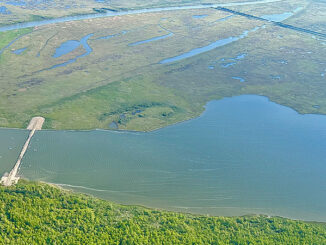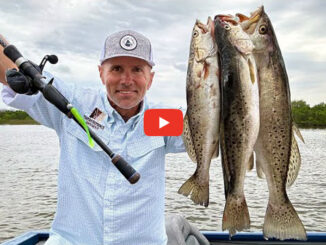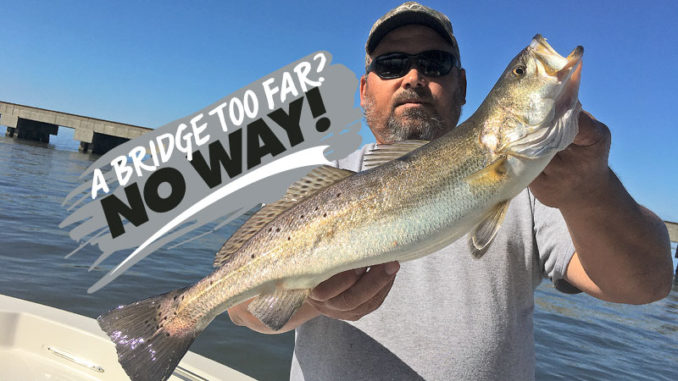
This Mandeville angler has incorporated tactics learned in Minnesota and perfected offshore in the Gulf to taking down spring specks.
Here in south Louisiana, fishermen have just about figured out every way there is to
catch a speckled trout.
From jigging the bottom to using a double rig under a popping cork, most have been taught from a young age the go-to methods of catching specks.

Andy Jones of Mandeville moved to Louisiana in 2002, so he had some catching up to do as far as targeting Lake Pontchartrain for speckled trout.
“It was like drinking from a fire hose,” he said. Jig the Causeway. Use Deadly Dudleys. Fish under the birds. Do the Pontchartrain Pop. Yeah I had a lot to learn in the speckled trout world.”
Jones soon got the hang of it, and then something jogged his memory back to a something he did when he was younger.
“One day, I was out there jigging the Causeway with plastics, and I saw Capt. Eric Dumas idle past, dragging baits behind his boat. He was catching trout — more trout than I was catching anyway,” he said.
It didn’t take him long to realize he could catch trout doing something he’d been doing for decades elsewhere.
Trolling
Trolling has been in Jones’ blood since he was a youngster, when he would visit his grandparents’ cabin on Minnesota’s Dagget Lake.
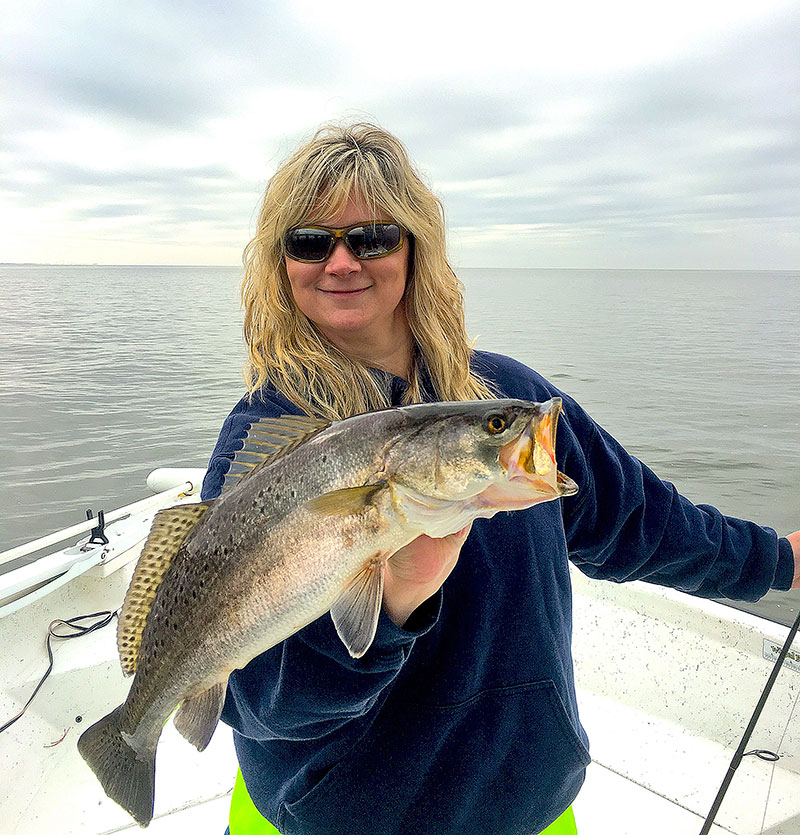
“I was 7 years old, and I remember seeing this old man paddle his canoe out and drag his line behind him,” he said. “I asked my friend, ‘Can we do that?’ and he said, ‘Sure.’ So we paddled our rowboat out there and started catching northern pike by just dragging lures out the back of the boat.”
As he grew up, Jones continued trolling. While stationed in Pensacola, Fla., with the U.S. Coast Guard, he trolled deeper Gulf waters for other species.
Now, he trolls the Lake Pontchartrain bridges and has merged the art of trolling with inshore saltwater fishing.
Jones has been fishing the 5-mile train bridge that connects Lake Pontchartrain’s north and south shorelines. Known locally as “The Trestles,” Jones said that April “is all about the quality over quantity. By far, I find that my biggest specks come when I am trolling this bridge in the spring.”
Water temperature
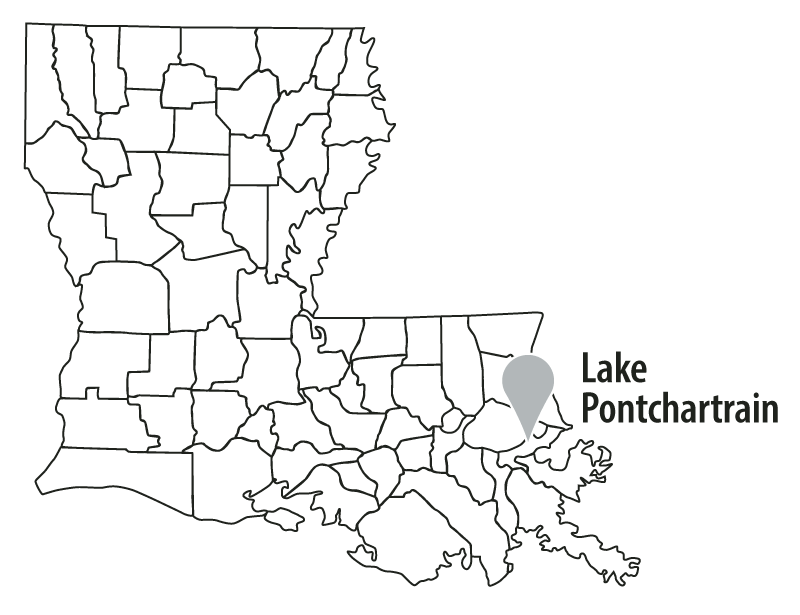 April is one of the best months to troll the Trestles because of the return of southeast winds that help push saltwater into the lake. The combination of saltwater with cooler water temperatures is the perfect recipe for actively feeding trout. Jones recommends trolling the bridge when the water warms.
April is one of the best months to troll the Trestles because of the return of southeast winds that help push saltwater into the lake. The combination of saltwater with cooler water temperatures is the perfect recipe for actively feeding trout. Jones recommends trolling the bridge when the water warms.
“When those water temps get into the 60s, it’s game on!” he said.
The benefit to dragging baits is that you can cover a lot of water rather than trying different spots jigging.
“These fish are still spread out, with the lack of bait grouping them up along the bridge, so by trolling, I can cover a lot of water and mark where they are,” Jones said.
After marking the locations, he doubles back and drags through the same spots and can usually put together a nice box by repeating this process.
Speed
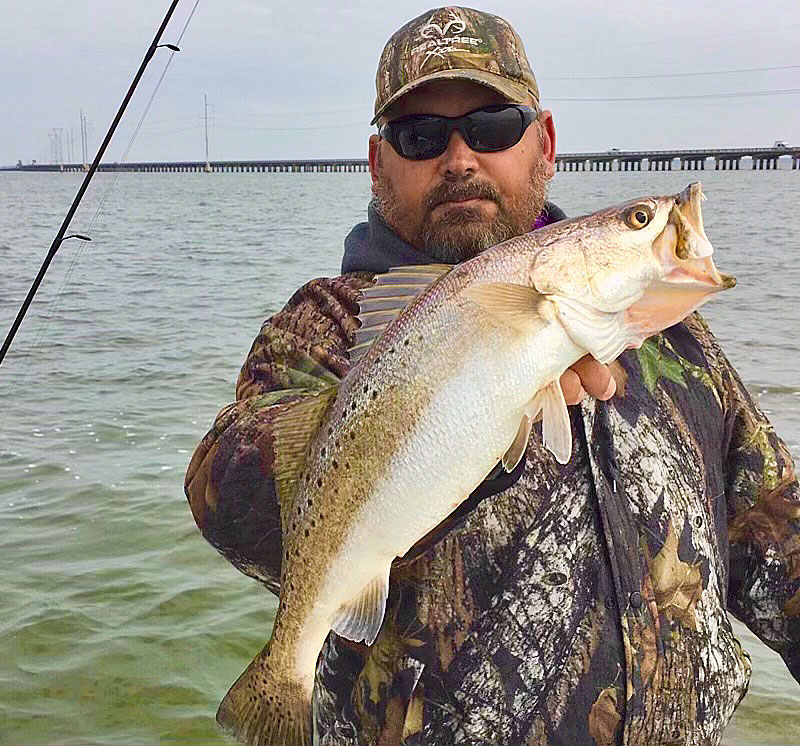
Maintaining the proper speed is crucial to picking up fish when trolling the Trestles. Jones said he sticks with two speeds when fishing the bridge.
“When the water temperature is 68 to 71 degrees, I’ll be going 2 to 2.3 mph,” he said. “When it’s 60 to 67 degrees, I’ll slow down to 1.5 mph because those fish are slower with the colder temperatures.”
As far as tides, he recommends trolling the upcurrent side of the bridge. This allows the baits to be pushed closer to the pilings.
“I like to try and get those lures as close to the concrete pilings as possible, and using the current to do this works perfectly,” he said.
Setup
Jones uses four rods when trolling. On his boat’s T-top are two rod holders that point outward; two 7-foot rods go there, mated with spinning reels spooled with 30-pound braid with 17-pound monofilament leader tied to a lipped MirrOlure. Figuring how much line to let out is simple.
“I’ll start letting the line out, and once I feel the bait bump the bottom, I give it a few cranks to get it off of the bottom,” he said.
Along the bridge, speckled trout can be suspended at different depths, so Jones has one lure a little closer to the boat than the other.
“After I see what depth they are, I’ll start dragging both baits at that level,” he said.
The other two rods are 4-foot, heavy duty trolling rods with reels spooled with 18-pound leadcore line. He ties on an 18-inch leader of 17-pound monofilament and a 3/4-ounce Rat-L-Trap.
“That’s your shock absorber,” Jones said. “There’s no give when using lead line, so adding some mono allows that hook to set in their mouths instead of ripping it out.”
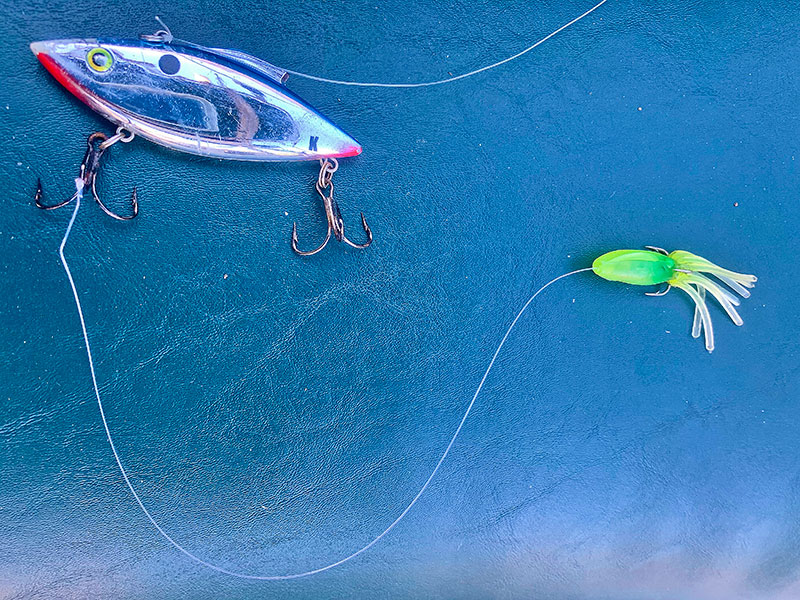
Some of Jones’ favorite colors are blue and chrome, electric chicken and pink. To the Rat-L-Trap, he adds an 18-inch monofilament trailer tied to a B2 Squid. He ties the trailer to the front treble hook.
“I find that the lure has better action when the trailer is tied to the front set of hooks rather than the back set because it allows the body to swim back and forth,” he said.
While April is one of the better months to troll, Jones said he’s not limited to the calendar page; he’s had plenty of success during mild winters.
“We’ve filled a box as early as December, so there’s a wide window to get out here and try your hand at trolling for specks,” he said.
